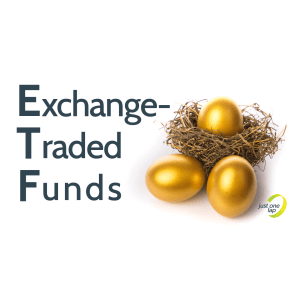[ad_1]
Currency ETFS
With the US$ rampant we’re seeing some serious Rand weakness (see year-to-date chart at the bottom of the post). How do we make some money off this, or even just protect our investments?
The easiest here is to buy any JSE listed offshore ETF. Then as the Rand weakens the ETF will move higher. The problem here is that most, if not all, of the underlying indices, are also falling. The CoreShares Global Dividend ETF (JSE code: GLODIV) is offshore and defensive in that it uses consistent dividend payments for a quality measure.
But let’s rather look at some JSE listed ETFs and ETNs that really track the Rand.
Absa NewWave currency ETNs
These are three Exchange Traded Notes (ETNs) from Absa that directly track the Rand against other developed market currencies.
They cover the USD, Euro and British pound. They basically trade 1:1 with the currency. So if you hold the US$ ETN and the Rand weakens to say R19.00/US$ the ETN will move to 1900c netting you a profit.
There are three of them listed below;
- NewWave EUR (JSE code: NEWEUR)
- NewWave GBP (JSE code: NEWGBP)
- NewWave US$ (JSE code: NEWUSD)
They’re simple and occasionally pay distributions from accrued interest, but this is not the main feature at all. We also note that the spread is generally fairly tight at under 10c. A really nice and simple way to get offshore currency exposure but importantly as these are ETNs they can not be included in your tax-free account.
1nvest ICE US Treasury Short Bond Index Feeder ETF (JSE code: ETFUSD)
This is a recently listed ETF from 1nvest and it tracks the ICE US Treasury Short Bond Index. These are very short US government bonds with a duration to the expiry of less than 1 year and the current average duration is four months.
This means that the rates will hardly move and they should not be considered a bet on US interest rates. Rather as the issuer says
“the majority of the performance will be driven by the USD/ZAR exchange rate”.
There will be quarterly distributions and the TER is 0.255%. As they’re an ETF you can include them in your tax-free account.
FNB Dollar Custodial Certificates
Here there are two offerings the first being Dollar Custodial Certificates (JSE code: DCCUSD) and this invests in US government bonds with a maturity of between two and ten years.
The second is the 2-year Dollar Custodial Certificates (JSE code: DCCUS2) and invests into US government bonds with a duration of less than two years.
The longer-dated DCCUSD will be impacted by rising rates in the US, but remember with bonds, yield (interest rate) up means price down. So rising rates will be negative, but you’ll still get the benefit of the weaker Rand.
The shorter DCCUS2 will be less impacted by rates, and more focused on the currency.
Both pay distributions with DCCUSD on a historic dividend yield of a little over 1% and the sorter DCCUS2 n a yield of some 0.1%.
Neither is eligible for inclusion in a tax-free account as they’re custodial certificates.
ETF blog
At Just One Lap, we are big fans of passive investment using ETFs. In this weekly blog, we discuss ETFs on the local market and the factors you need to consider when choosing an ETF. If you have wondered how one ETF differs from another, this is where you can find out. We explain which index each ETF tracks, what type of portfolio could benefit from holding each ETF, and how the costs will affect your bottom line.
[ad_2]
Image and article originally from justonelap.com. Read the original article here.


